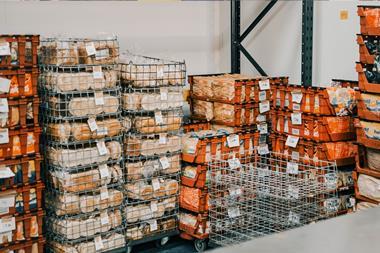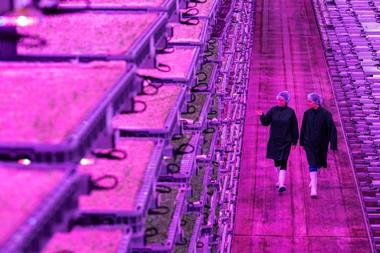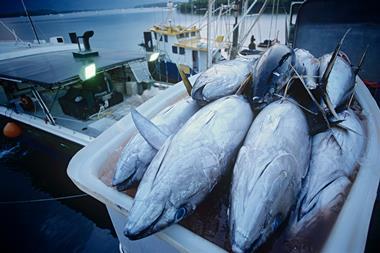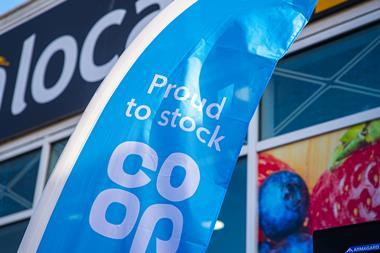
The United Nations has laid out a food systems strategy that aims to tackle world hunger, while staying within internationally agreed global warming targets for the first time.
The agency’s Food and Agriculture Organization (FAO) rolled out a global roadmap which sets out detailed goals for food systems to remain within 1.5C while feeding a growing population.
Unveiled during the final stages of the UN’s climate conference in Dubai, the FAO’s roadmap is the first of its kind for food – doing a similar job to the International Energy Agency’s Net Zero by 2050 Roadmap for the energy sector.
Food production is not only one of the largest contributors to global warming – around one-third of all greenhouse gas emissions come from food and farming – it is also highly vulnerable to the effects of climate change.
The FAO said the aim was “to transform agrifood systems – which encompass how the food we eat is farmed or raised, how it is transported, and how and where we dispose of it – growing harvesting from net emitters into a carbon sink by 2050”.
The roadmap’s first instalment sets out a series of key targets across “priority areas” such as livestock, soil and water, crops, diets and fisheries, that need to be met between 2025 and 2050, with further detail to be published over the next three years – including a regional roadmap and associated costs at COP29, followed by a national roadmap with country action plans at COP30.
Some of the more immediate targets set by the FAO include reducing methane emissions from livestock by 24% by 2030 and halving food waste by 2030, as well as safe and affordable drinking water for all by 2030.
Read more: Dairy giants pledge to disclose methane emissions for first time
“The FAO should be applauded for this first step in laying out a plan to eliminate extreme hunger and the third of greenhouse gas emissions from food systems, and particularly for its emphasis on a just transition – it is not easy,” said Emile Frison from the International Panel of Experts on Sustainable Food Systems.
However, Frison said the UN agency should be tougher on fossil fuel transition, adding “the next rounds of this process will need to go much further in proposing a real transformation of the status quo, by putting much more emphasis on diversification, shorter supply chains and agroecology, and on tackling the massive power inequalities imposed by a handful of companies that define what we grow and eat”.
Accelerated climate actions can transform agrifood systems and help achieve food security and nutrition for all, today and tomorrow.
— Food and Agriculture Organization (@FAO) December 10, 2023
Read @FAO’s Global Roadmap to achieve #SDG2 without breaching the 1.5ºC threshold ➡️ https://t.co/SWJJJyrCxp#COP28 #ClimateAction pic.twitter.com/hYGi9oTzqO
The Institute for Agriculture and Trade Policy’s executive director Sophia Murphy agreed that the FAO’s roadmap offered “a welcome focus on the right to food in the cacophony of food interests that have descended on COP”, with key issues such as farm worker rights and social protections mentioned.
But it failed to “call on big agricultural companies to make real emissions reductions”, she claimed – “especially in rich countries where cutting methane and nitrous oxide emissions from industrial animal operations is a low-hanging fruit with huge collateral benefits for biodiversity, rural economies and healthy diets”.
Most food and environmental experts have welcomed the roadmap and its focus on healthy diets and emissions reductions across high-polluting sectors like meat and dairy.
But they’ve also conceded it was still early stages and more detail around how to achieve some of those monumental targets – as well as legally-binding actions – was still needed.
“This roadmap presents a toolkit of options for what can be done to improve nutrition while reducing the climate impact of our food system,” said Nusa Urbancic, CEO of Changing Markets Foundation.
“It talks about healthy diets, but stops short of recommending a reduction in meat and dairy consumption in rich countries and parts of emerging economies as one of the best ways to reduce emissions and land use,” she said, adding it relied on “unproven techno-fixes” to reduce the environmental impacts of livestock production, including measures for cutting methane “which are not yet commercially available”.
Read more: COP28: World leaders pledge to slash food systems’ impact on climate
But European Climate Foundation fellow Ruth Davis argued that while the roadmap “doesn’t take us all the way to the destination we need”, its huge milestones meant companies and governments “now have no excuse for ignoring food in their climate plans”.
She also called for a much stronger focus on nature as a crucial element to ensuring food security.
“Goals and targets for protecting and restoring nature, agreed by 188 governments last year in a historic global deal, must guide the next iteration of the FAO roadmap – or we all risk being on the road to nowhere.”
This year’s UN summit is wrapping up on Tuesday 12 December, with intense negotiations still underway as the possibility of a fossil fuel phase-out remains on the cards.
Secretary-general António Guterres urged world leaders to aim for “maximum ambition” in their discussions to reach 1.5C goals – “we are in a race against time”, he said.



![XOXO-Product-Shot[ALL FLAVOUR]-Sky-1920x1080](https://dmrqkbkq8el9i.cloudfront.net/Pictures/274x183/4/9/2/355492_xoxoproductshotallflavoursky1920x1080_806584_crop.jpg)










![XOXO-Product-Shot[ALL FLAVOUR]-Sky-1920x1080](https://dmrqkbkq8el9i.cloudfront.net/Pictures/380x253/4/9/2/355492_xoxoproductshotallflavoursky1920x1080_806584_crop.jpg)




3 Readers' comments